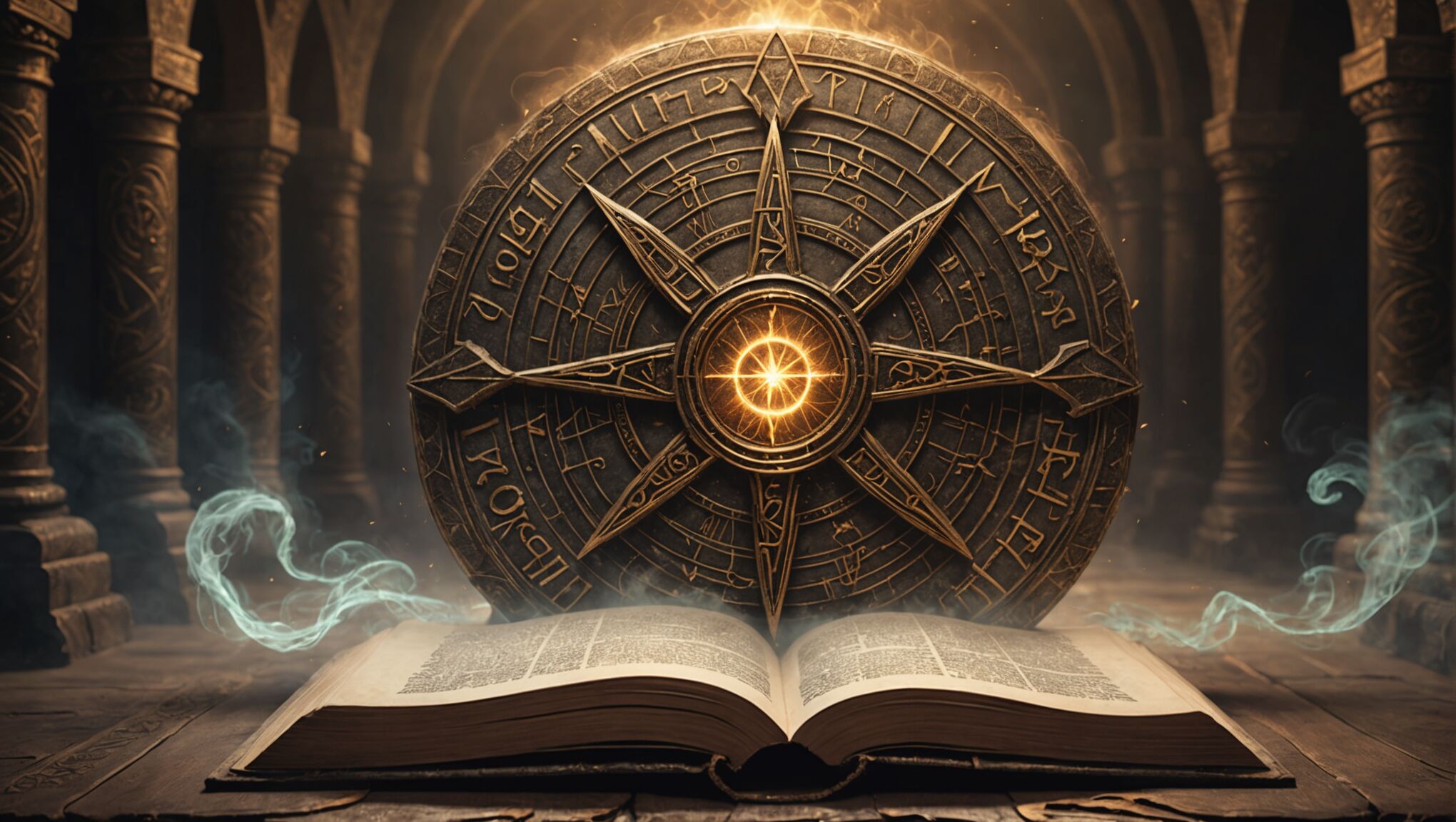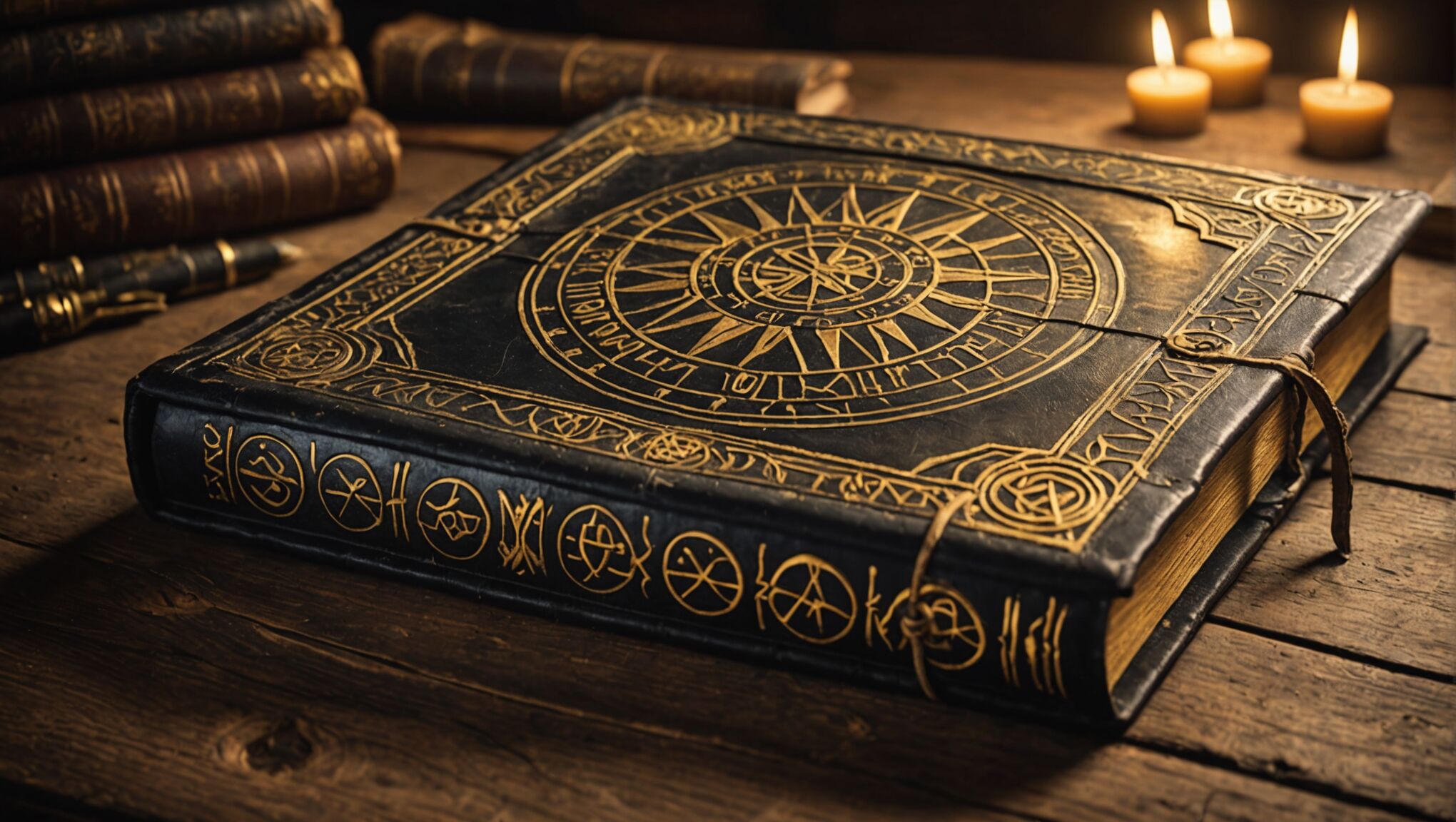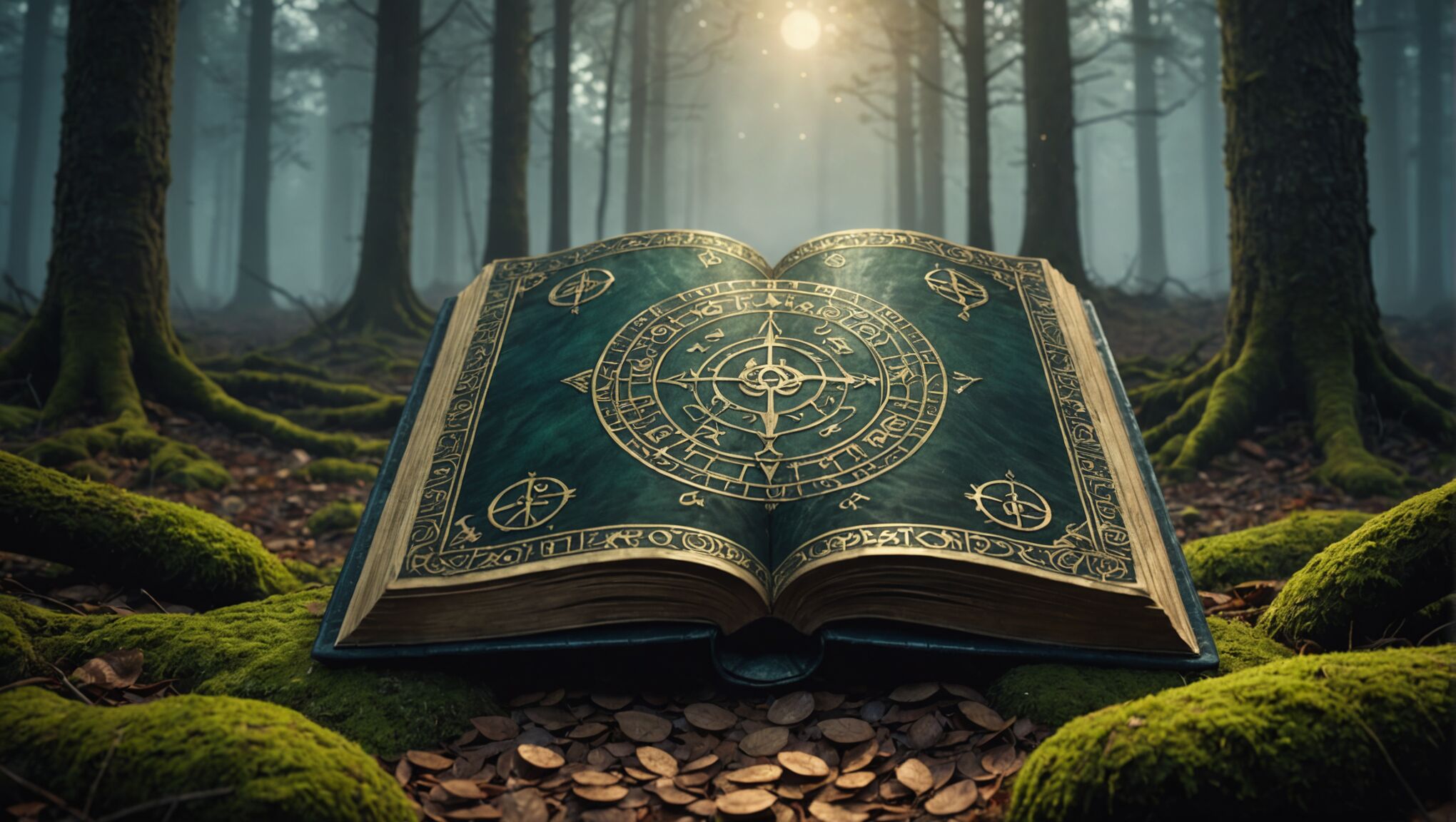blog
Transforming Your Manuscript into a Fantasy Cover Masterpiece
Fantasy book covers have evolved significantly over the years, reflecting changing trends and reader preferences. Today’s market demands eye-catching designs that not only capture the essence of the story but also stand out in crowded online marketplaces. Successful fantasy covers often feature iconic imagery, such as magical creatures, mystical landscapes, or powerful protagonists. Immersive world-building is a key aspect, with covers serving as a visual gateway to the fantastical realms within. Color palettes play a crucial role, with rich, vibrant hues often dominating the fantasy genre. However, there’s also a growing trend towards minimalist designs that use negative space and bold typography to create intrigue. It’s essential to research current bestsellers and analyze their cover designs to understand what resonates with readers. “A cover is a promise,” as the saying goes, and in fantasy, that promise often involves adventure, magic, and escapism. Subgenres within fantasy, such as urban fantasy or grimdark, have their own visual languages that readers have come to expect. Understanding these nuances can help authors and designers create covers that not only attract the right audience but also accurately represent the book’s content. Additionally, series branding has become increasingly important, with cohesive design elements tying multiple books together visually. By staying informed about these trends and expectations, authors can better navigate the complex landscape of fantasy cover design and increase their chances of creating a truly captivating book cover.
Selecting key elements from your manuscript
 When transforming your manuscript into a captivating fantasy cover, the key lies in distilling the essence of your story into visual elements. Begin by identifying the most iconic and memorable aspects of your narrative. This could be a unique magical artifact, a distinctive character, or a pivotal scene that encapsulates the heart of your tale.
When transforming your manuscript into a captivating fantasy cover, the key lies in distilling the essence of your story into visual elements. Begin by identifying the most iconic and memorable aspects of your narrative. This could be a unique magical artifact, a distinctive character, or a pivotal scene that encapsulates the heart of your tale.
Consider the central themes and motifs that run through your work. If your story revolves around elemental magic, for instance, you might choose to represent this through symbolic imagery or color schemes associated with the elements. Character-driven narratives might benefit from featuring a striking portrait or silhouette of the protagonist, while epic sagas could showcase sprawling landscapes or intricate world maps.
“The cover is the first poem of the book,” said poet Nikki Giovanni, and this sentiment rings especially true for fantasy literature.
Pay attention to the emotional tone of your story. Is it dark and brooding, or light and whimsical? The atmosphere you’ve created in your writing should be reflected in the cover’s overall mood. If your book features a unique magic system, consider how you might visually represent this in a way that intrigues potential readers.
Don’t overlook the power of symbolism. A simple object or emblem that holds significant meaning within your story can make for a powerful and mysterious cover image. Think of the golden snitch from Harry Potter or the iconic ring from The Lord of the Rings – these objects became synonymous with their respective series.
Remember that your cover should also hint at the scope of your story. Is it an intimate character study or a world-spanning epic? The scale of your chosen imagery can convey this at a glance. For multi-book series, consider elements that can be carried through multiple covers to create a cohesive brand.
Lastly, think about what sets your book apart from others in the genre. If you’ve created a unique twist on traditional fantasy tropes, find a way to showcase this originality in your cover design. This could be through an unexpected color palette, an innovative composition, or by highlighting a distinctive element from your world-building.
By carefully selecting these key elements from your manuscript, you lay the foundation for a cover that not only accurately represents your story but also captivates potential readers, inviting them to delve into the fantastical world you’ve created.
Add texture to make your cover unique. Explore now.
Choosing the right visual style and mood

When choosing the visual style and mood for your fantasy book cover, it’s crucial to align the aesthetic with the tone and atmosphere of your story. A dark, gritty tale might call for muted colors, heavy shadows, and rough textures, while a lighthearted adventure could benefit from bright, vibrant hues and softer lines. Consider the emotional impact you want to create at first glance – awe, mystery, excitement, or perhaps a sense of foreboding.
The art style itself can range from highly detailed realistic illustrations to more stylized or even abstract approaches. Photorealistic covers can lend a sense of authenticity to your world, making it feel tangible and immersive. On the other hand, a more stylized approach can emphasize the fantastical elements and create a unique visual identity. Some authors opt for symbolic or minimalist designs that rely on powerful imagery to convey the essence of their story.
Color psychology plays a significant role in setting the mood. Deep purples and blues can evoke mystery and magic, while earthy tones might ground your story in a more rustic or historical fantasy setting. Contrast is key – a pop of bright color against a darker background can draw the eye and create intrigue. Consider also the use of light and shadow to create depth and drama, particularly for covers featuring landscapes or architectural elements.
The composition of your cover is equally important. A central focal point can create a powerful impact, while a more complex scene might invite closer examination. The use of perspective can also influence the mood – a towering castle viewed from below can instill a sense of awe, while an overhead view of a magical forest might evoke wonder and curiosity.
Texture can add another layer of depth to your cover. A weathered, leather-like texture might suit a historical fantasy, while smooth, glossy surfaces could work well for a futuristic or urban fantasy setting. Don’t forget about the potential of metallic accents or embossing to add a touch of luxury and magic to your cover design.
Remember that your cover should also convey the subgenre of your fantasy novel. Epic fantasy might call for sweeping vistas and grand battles, while urban fantasy could incorporate modern cityscapes with magical elements. Romantic fantasy might focus more on character relationships, potentially featuring couples or emotive portraits.
Ultimately, the visual style and mood you choose should create an immediate emotional connection with your target audience. It should promise the kind of experience they’re looking for in a fantasy novel, whether that’s an epic adventure, a magical romance, or a dark and twisted tale. By carefully considering these elements, you can create a cover that not only represents your story faithfully but also stands out in the competitive fantasy market.
Collaborating with a cover artist
When collaborating with a cover artist, clear communication and mutual understanding are paramount to achieving the desired result. Begin by providing the artist with a comprehensive brief that includes not only the key elements you’ve identified from your manuscript but also your vision for the cover’s mood and style. Share relevant passages from your book that vividly describe characters, settings, or important objects to help the artist visualize your world.
It’s beneficial to create a mood board or collection of reference images that capture the aesthetic you’re aiming for. This visual guide can help bridge any gaps in communication and ensure you and the artist are on the same page. However, be open to the artist’s interpretation and creative input – their expertise can often lead to unexpected and exciting design solutions.
Discuss the technical aspects of the cover, such as dimensions, resolution, and any specific requirements for print or digital formats. Be clear about your budget and timeline from the outset to avoid misunderstandings later in the process.
During the creation process, establish regular check-ins or milestones where you can review the artist’s progress. This allows for timely feedback and adjustments, ensuring the final product aligns with your vision. Be specific and constructive in your feedback, focusing on elements that can be improved rather than personal preferences.
| Do | Don’t |
| Provide clear, detailed briefs | Micromanage the artist’s process |
| Be open to creative suggestions | Expect mind-reading or perfect first drafts |
| Offer constructive, specific feedback | Make vague or subjective comments |
| Respect the artist’s time and expertise | Request endless revisions without compensation |
Consider involving your publisher or marketing team in the process if applicable, as they may have valuable insights into market trends and reader expectations. However, maintain a balance between commercial considerations and artistic integrity.
Remember that cover creation is an iterative process. Be prepared for multiple revisions and refinements. As the artwork progresses, you may find that certain elements work better than others, or new ideas emerge. Flexibility and open-mindedness can lead to a cover that exceeds your initial expectations.
Discuss the rights and usage of the artwork upfront. Ensure you have the necessary permissions for various applications of the cover art, such as promotional materials, merchandise, or potential adaptations.
Lastly, maintain a positive and respectful working relationship with your cover artist. Acknowledge their contributions and expertise. A good collaboration can not only result in a stunning cover for your current project but also lead to fruitful partnerships for future books in your series or other works.
Typography and font selection for fantasy books
 The art of typography in fantasy book covers is a delicate balance between readability and evocative design. Selecting the right font can dramatically enhance the overall impact of your cover, setting the tone for the entire reading experience. When choosing typography for your fantasy book, consider fonts that reflect the era or atmosphere of your story. For medieval-inspired fantasies, Gothic or Blackletter fonts can lend an air of antiquity, while more modern or futuristic fantasies might benefit from sleek, minimalist typefaces.
The art of typography in fantasy book covers is a delicate balance between readability and evocative design. Selecting the right font can dramatically enhance the overall impact of your cover, setting the tone for the entire reading experience. When choosing typography for your fantasy book, consider fonts that reflect the era or atmosphere of your story. For medieval-inspired fantasies, Gothic or Blackletter fonts can lend an air of antiquity, while more modern or futuristic fantasies might benefit from sleek, minimalist typefaces.
It’s crucial to ensure that your title is legible at various sizes, from thumbnail images on online bookstores to physical copies on shelves. Bold, clean fonts often work well for this purpose, but don’t shy away from customized or hand-lettered titles that can add a unique touch to your cover. Consider the interplay between the font and the cover art – the typography should complement the imagery, not compete with it.
Experiment with the placement of your title and author name. While centered text is traditional, off-center or vertically aligned text can create visual interest and guide the reader’s eye across the cover. The size and weight of your font can also convey meaning – larger, bolder text might suggest an epic scale, while more delicate typography could hint at a more intimate or intricate story.
Color is another vital aspect of typography in fantasy covers. Metallic effects, such as gold or silver lettering, can add a touch of magic and luxury. However, ensure that there’s sufficient contrast between the text and the background for optimal readability. Sometimes, a simple drop shadow or outer glow can make text pop without overwhelming the design.
Consider the emotional impact of your font choices. Serif fonts often convey a sense of tradition and reliability, which can work well for classic fantasy tales. Sans-serif fonts, on the other hand, can feel more modern and clean, potentially suiting urban fantasy or contemporary settings. Script fonts can add elegance and romance but should be used judiciously to maintain legibility.
Don’t overlook the importance of secondary text, such as subtitles or series names. These elements should be harmonious with the main title but distinct enough to create a clear hierarchy of information. Mixing font families can be effective when done thoughtfully – for example, pairing a decorative title font with a clean, simple font for the author’s name.
Remember that typography is not just about the letters themselves but also about the space around them. Proper kerning (the space between individual letters) and leading (the space between lines of text) can significantly impact the overall aesthetic and readability of your cover.
Lastly, consider how your typography choices will translate across different formats. What looks stunning on a hardcover may not work as well for an ebook thumbnail. It’s often worth creating variations of your cover design to ensure it’s effective across all platforms.
By paying careful attention to typography, you can create a cover that not only captures the essence of your fantasy world but also stands out in a crowded marketplace. The right font can become as iconic as the story itself, leaving a lasting impression on readers and potentially defining your brand as an author.

